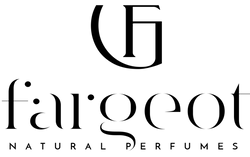The Dark Side of Fragrance: Toxic Ingredients Hidden in Halloween Scents

As Halloween approaches, shelves fill with pumpkin-spice sprays, "witchy" perfumes, and scented candles promising to smell like bonfires, candy, and mystery. But behind the seasonal charm potentially hides a darker truth: many of these products hide a cocktail of synthetic chemicals under one innocent-sounding word — "fragrance".
👻 The Frightful Secret Behind the word "Fragrance"
In most commercial perfumes and sprays, the word fragrance on a label isn’t just one ingredient — it can represent hundreds of undisclosed chemicals.
And because companies are legally allowed to protect their "proprietary blends", they can list them simply as fragrance or parfum, without revealing the full formula.
Hidden behind that single word, you might find some spooky ingredients such as:
- Phthalates - used to make scent last longer but linked to hormone disruption.
- Synthetic musks - can accumulate in the body and affect the endocrine system.
- Parabens - preservatives that may mimic estrogen and disrupt hormone balance.
- Formaldehyde-releasing agents - sometimes used to preserve ingredients, known irritants and potential carcinogens.
While you might only spray or light these products occasionally, they add up over time — especially if you use multiple scented products every day (perfume, body lotion, hair products, home fragrance, etc).
🍬 Halloween’s Most Common Synthetic Notes
Many Halloween-themed scents are designed to evoke warmth and comfort — but often through artificial ingredients that mimic nature rather than come from it. Here are a few examples:
-
Vanillin - smells like vanilla. Usually derived from petrochemicals.
- Natural alternatives: Vanilla or Benzoin Resin
-
Synthetic musk - smells warm and earthy. Can be bioaccumulative (builds up in the living tissues faster than it is broken down).
- Natural alternatives: Ambrette Seed or Labdanum
-
Smoke - smells like a bonfire. Usually artificial smoke molecules containing harmful compounds such as formaldehyde.
- Natural alternatives: Vetiver, Birch Tar
-
Caramel/lollies - smells like sweet treats. Usually made of artificial aroma compounds causing headaches and allergies.
- Natural alternatives: Tonka Beans, Balsam Peru, Vanilla
🧙 The Real Magic: Botanical Ingredients
Many natural ingredients coming from plant resins, flowers, roots, and woods have been used for centuries in rituals and healing, with some most evocative of "Halloween-worthy" notes:
- Frankincense & Myrrh: Ancient resins with mystical, meditative depth.
- Patchouli: Earthy and grounding, often linked to transformation and introspection.
-
Vetiver: Smoky, woody and cooling — reminiscent of damp soil and twilight air.
- Cedarwood: Warmth and calm; used since ancient times for purification.
🎃 This Halloween, Choose the Right Potion
When choosing scented products this Halloween, avoid vague terms like "fragrance" or "parfum". Unless it’s clearly marked as "100% natural", this often means synthetic compounds. Even then, look for full ingredient disclosure on the label. Check for certifications. "Vegan", "cruelty-free", and "natural" claims should be backed by credible standards or ingredient transparency.
Whether you’re drawn to smoky resins, dark woods, or soft amber tones, nature offers all the mystery you need — no tricks, only (botanical) treats.

